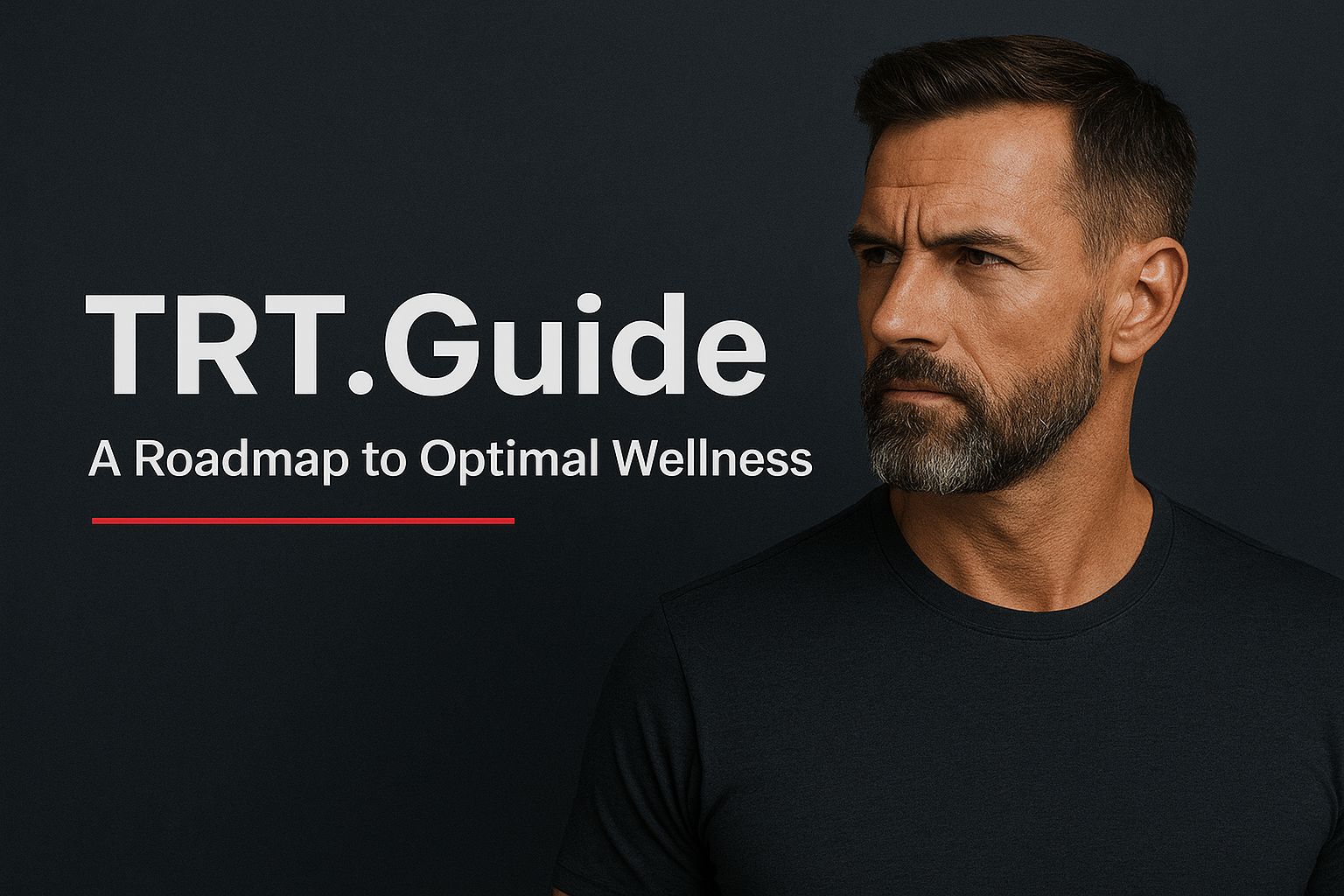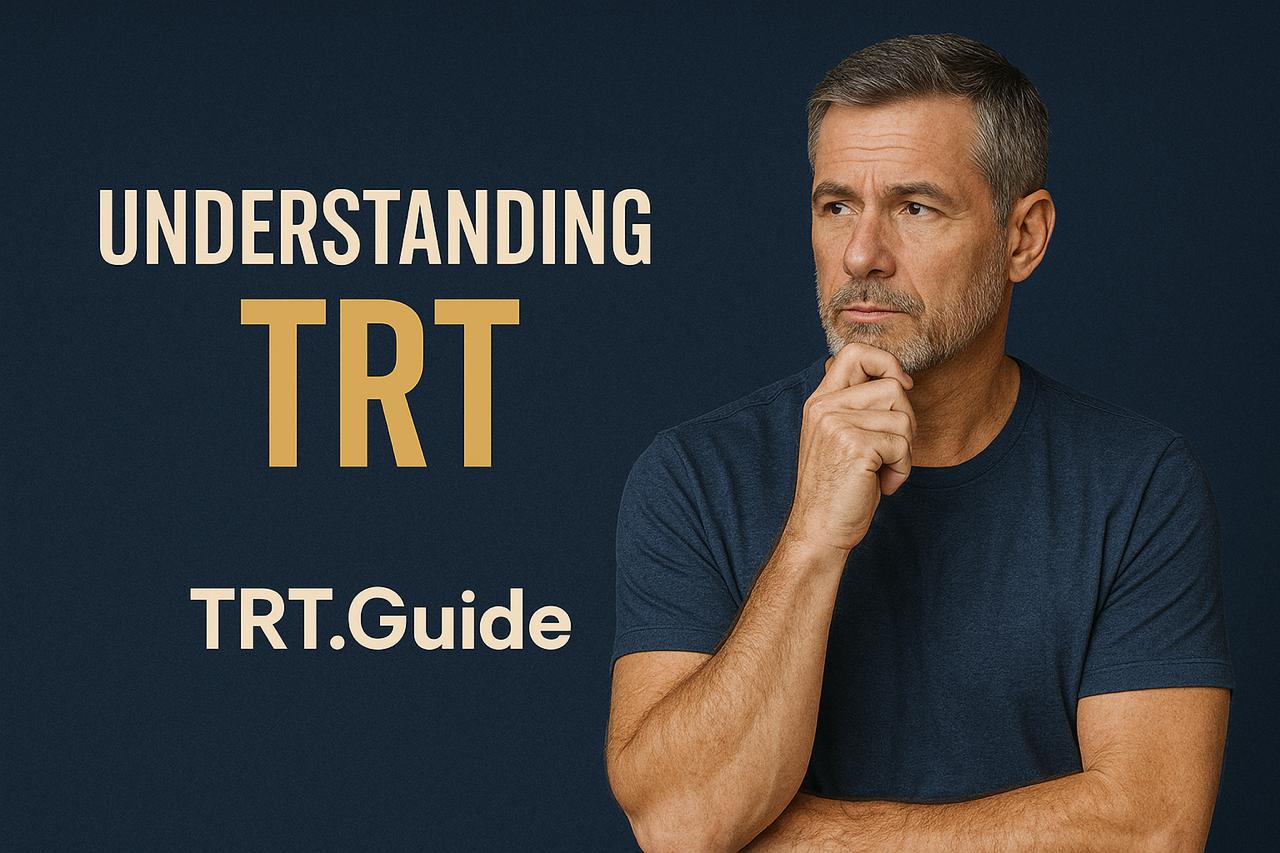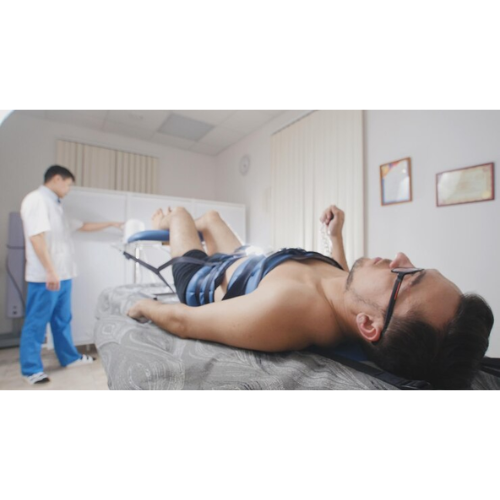If you’ve ever felt tired, observed a change in your mood, or had trouble with weight gain, the role of testosterone in your health might become a necessity that you need to understand. Testosterone Replacement Therapy (TRT) has been popularized as the solution for men who suffer from low levels of the hormone, but it’s not really that simple. The TRT cascade, or the whole process of the testosterone replacement therapy, includes steps and factors that may possibly be the game-changers in the improvement of one’s overall health.
One has to know this cascade in order to be capable of comprehension and, consequently, make rational decisions about their health. To come from the stage of establishing the symptoms, via diagnosing and coming to terms with the options, each step is a major factor in effectively tackling the problem of low testosterone.
Overview of Testosterone Replacement Therapy Cascade
Through TRT, low testosterone levels that cripple men be health-wise are dealt with and this influences their various health problems. Familiarity with the succession of procedures paves the way for better health.
Definition and Importance
When you do testosterone replacement therapy you give patients external testosterone to reach the normal hormonal level affected by the testosterone fall. It is notable that the latter not only influences physical but also psychological health in a man’s life.
For example, one of the most common symptoms is fatigue, plus libido weakening, muscle tissues disappearing and mood swings. Besides alleviating these symptoms, through TRT the body compensates the missing of the hormone that is also responsible for the regulation of the mood and the maintenance of the energy and vitality of the body. In fact, recent studies demonstrate that TRT accelerates the process of rejuvenation, brings life quality back to the level of a young guy, makes the body viral, and pumps up the muscle.
Furthermore, TRT provides metabolic boost and is likely to be a boon to heart health. Proper and regular assessment wet to ensure that the treatment (TRT) concerning the maximum benefits to the patient while minimizing the risks in whatever way feasible. It is imperative that health practitioners’ guidance should be followed to gain therapy that is not only efficient, but but safe as well.
Common Indications for Therapy
Testosterone replacement therapy is used to treat the following conditions caused by low testosterone levels. Among a variety of the most common indications are the following:
- Hypogonadism: The inadequacy of production of testosterone – it has a critical impact upon the patient’s livelihood, sex drive, and muscle mass.
- Age-related testosterone decline: Usually confirmed with the help of blood tests, often causing symptoms including weakness and a complete lack of willingness to perform anything.
- Obesity: Through the transformation of fat into the male hormone, testosterone, the subject can lose weight and thus have a positive impact on his health manifold.
- Chronic illnesses: The increased necessary levels of hormones can affect the pathology of diseases like diabetes and hypertension, necessitating TRT for the patient’s comfort and motivation.
- Mental health issues: Certain symptoms could be an instant reference to the endocrine crisis the person is facing, e.g., if he is diagnosed with low levels of T, it would be easier for the patient to comprehend this route of treatment.
This knowledge will help you be alert to the signals at an early stage and be prepared to use TRT to get support in the right place.
Mechanism of Action
Testosterone replacement therapy helps guys with low testosterone levels stop the symptoms of the disease and achieve hormonal equilibrium. If the patient comprehends the significance of testosterone and low testosterone in general, the use of this therapy can become the cornerstone of his successful treatment course.
How Testosterone Functions in the Body
Ttestosterone is primarily a steroid hormone that affects the overall biology of the man. It mostly binds directly to the androgen receptors present in the target cells which then provoke the specific genes to react for muscle growth, bone growth, and fat distribution. Testosterone also takes part in the regulation of mood, it is relevant for red blood cell generation, it intensifies libido, and thus, improves quality of life for humans. Hormonal equilibrium is a prerequisite for those body systems that are responsible for providing the most important functions of the body such as energy, immune response, or mental performance, to operate normally and healthily, thus maintaining the overall good health of the person.
Deficiency in testosterone can bring a number of negative reactions in the body which, on the good side, might help to know how to deal with the symptoms. In most cases, these symptoms are marked by tiredness, low libido, and erectile dysfunction that may result from the decreased level of testosterone in the male body. The increment in body fat and the corresponding decline in muscle strength can lead to obesity; the issue that the person was once lean and strong, with no traces of fat, changes the overall appearance.
Mental issues in human beings will quite often come up in the form of depression and irritability when the people have lost their usual number of testosterone. It is common to have various cognitive tasks (memory, focus) that are responsible for the impairment of the day-to-day activities. Proper noticing of symptoms and seeking for the necessary treatment can pave the way for timely remedial measures of the whole health via TRT which are more effective.
The Treatment Cascade Process
Testosterone replacement therapy (TRT) consists of a cascading process that is made to follow it through the whole receiving or incoming medical services and monitoring during your treatment course. It is therefore every stage that comes in the process that keeps us going with the outcomes required and, at the same time, diminishing the risks involved in the same outcome.
Initial Assessment and Diagnosis
The early part of the examination starts with a detailed clinical analysis of the condition. You’ll need to talk more about the symptoms, i.e., fatigue, poor sexual drive, and mood swings that are so acute. A medical practitioner might also request that health status (testosterone level) be measured by a blood test, usually done in the morning when the levels are at their highest. The Endocrine Society’s guideline is that a total testosterone value lower than 300 ng/dL indicates a probable deficiency. The further diagnostic process may include the checking of the other diseases like obesity or diabetes that could impact the level of testosterone in the body.
The evaluation that is based on age, medical history, and lifestyle determines the proper diagnosis, such as hypogonadism or age-related testosterone decline, of a kind of illness. Before the actual treatment is done in the TRT cases, a positive and necessary step is the accurate diagnosis of diseases of this type.
Identification of Stages and Treatment Options
Once you have made a diagnosis, the next step is to define the phase of your condition that is responsible for the deviations in testosterone levels. The identification of treating methods is also done in the process of staging your situation. The possible ways of treatment can range from the use of intramuscular injections, transdermal patches to something one can wear on the skin (gels).
Preferably a choice of the method will depend on one’s comfort and ease and how compatible the method is with the person’s way of life. In terms of intramuscular injections, this administration may usually take place biweekly or triweekly; also, gels are a convenient option with daily application. Determining individually the best type of therapy is an option as it enhances patients’ cooperation and contentment. Another advantage of having a detailed conversation with your medical practitioner is that he/she gives the necessary guidance to become aware of and choose the most appropriate method that matches your life and needs.
Monitoring and Adjustments
Continuous monitoring is a requirement for successful TRT treatment. The doctor will organize regular visits to assess the treatment’s effectiveness and be ready to adjust the doses when and if it becomes necessary. Blood tests from time to time are customarily taken in the first year, start at 3-6 months apart, and then are used to check the level of testosterone, hematocrit percentages, and other basic parameters.
If the symptoms still prevail or side effects come up, then some readjustments are to be made. Recognizing the relationship between therapeutic effects and probable risks, such as heart issues, is a wise move. Being in close collaboration with the clinician will help you maximize the full effect of the treatment and at the same time, it will ensure you the safety of your therapy.
Benefits and Dangers
Testosterone replacement therapy (TRT) has some good points but it comes with a few risks. Both positive and negative sides of the treatment should be considered in order to make the health decisions that are well-informed.
The Bright Side of Therapy
TRT is abundant in terms of people with low testosterone levels getting positive results.
- High Energy Levels: Better testosterone levels result in higher energy levels and less fatigue.
- Better Mental State: TRT eliminates mood swings and signs of depression, thus ensuring one’s emotional stability.
- Increased Desire: Many people feel more sexual and have better erectile function.
- Increase in Muscle Mass: Those on TRT often notice an increase in muscle strength and mass that supports the overall physical fitness.
- Good for the Bones: TRT might promote bone density, which in turn prevents osteoporosis-related fractures.
- Greater Metabolic Health: The benefits of TRT on fat distribution and glucose metabolism can improve the situation of obese people with type 2 diabetes and help prevent type 2 diabetes as well.
These apparent advantages of the therapy influence a positive lifestyle increase and that’s why TRT is an option to be considered for a major part of those with low testosterone levels.
Risks and Hazardous Conditions
However, there are potential side effects and dangerous conditions associated with TRT that must be taken into account.
- Heart Risks: According to some studies, there is a high chance of a cardiovascular event including those in the elderly or with heart disease.
- Sleep Apnea: TRT can worsen sleep apnea or create obstructive sleep apnea as well as cause real sleep to be of poor quality.
- Skin Reactions: The method of administration chosen which can be gels or patches may produce skin rashes due to irritation or allergic reactions.
- Hormonal Imbalance: Incorrect dosages could lead to excessively high levels of estrogen triggering manifestations such as gynecomastia.
- Prostate Health Concerns: TRT has the potential to accelerate the growth of the existing prostate cancer or benign prostatic hyperplasia.
- Erythrocytosis: An abnormal increase in red blood cell production can happen, thickening blood, and possibly leading to increased stroke risks.
Conclusion
The TRT journey is not very different from an entire life journey; this tour may lead to being fit, healthy, and of sound mind. At the very first step of the problem, when you cannot feel what exactly is the matter with your body, you could not be able to make a proper decision concerning your health. Thus, this article is for those who struggle with recognizing the real ailments, and the plan needs to be transformed considerably to secure the health of everyone.
Frequent Ask Questions
What is testosterone replacement therapy (TRT)?
TRT is a therapy which includes the replacement of natural testosterone in men who are suffering from hypogonadism, a condition in which a man makes very little or no testosterones. The aim of this therapy is to cure an individual off symptoms like fatigue, lack of libido, changes in mood, and also to help him have a high quality of life in general.
Who should consider TRT?
Some of the indications for TRT are a decline in testosterone level related to age, being overweight, having chronic illnesses, or experiencing mental health issues. These symptoms of low testosterone, such as weight gain, fatigue, or mood disturbance, suggest that a man should be thinking about trying testosterone therapy.
How is low testosterone diagnosed?
Low testosterone can be easily diagnosed by evaluating various symptoms and then ordering blood work to test the levels of testosterone in the body. The result of lower than 300 ng/dL can suggest low testosterone and it is recommended to seek help from a healthcare provider for further testing.
What are the benefits of TRT?
If you compare the quality of your life after TRT treatment with that before the treatment, the advantages of TRT, like getting high energy results, getting rid of frustrations, getting energy for emotional intimacy, increasing muscle strength, becoming strong boned, and improving the health of metabolism, are the major determinants that you will live among the best persons in the world.
What are the risks associated with TRT?
The potential hazards associated with TRT are known as such: heart attacks, sleep apnea, skin reactions, hormone imbalances, troubles with the prostate, and erythrocytosis. It is critical that people talk with a healthcare provider about these issues before starting treatment.
How is TRT administered?
TRT can be given through different ways like, through intramuscular injections and transdermal patches. The modality of medication is individually tailored according to each patient’s preferences and lifestyle with the aim of making the treatment more acceptable.
How often should I undergo monitoring during TRT?
Ongoing monitoring during TRT is normally a matter of having regular follow-ups and blood tests every three to six months. This way, the therapy’s effectiveness is monitored and the dosage can be corrected as far as the risks are concerned.
Can TRT help with mental health issues?
For sure, TRT can make mood symptoms more stable and lower levels of testosterone can lead to depression identified symptoms. By resolving the hormone issues, soul health can also be significantly and simultaneously improved.
What should I do if I suspect low testosterone?
In case you feel that your testosterone level is below the normal range, your first move should be to set up an appointment with a healthcare provider. A thorough examination, vital tests, and advice on the next steps of treatment are something that healthcare provider can help you with.






